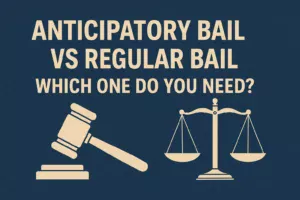This article talks about Goods And Services Tax (Gst) Regulations.
Introduction to GST
In the vibrant economic landscape of India, the Goods and Services Tax (GST) stands as a pivotal reform. Implemented on July 1, 2017, GST sought to unify the country’s complex tax structure into a single, streamlined system. This monumental tax reform aimed to eliminate the cascading effect of taxes, fostering a more transparent and efficient taxation mechanism. For individuals and businesses alike, understanding GST regulations is crucial for compliance and making informed decisions.
What is GST?
GST is a comprehensive, multi-stage tax levied on the supply of goods and services. It encompasses various indirect taxes previously imposed by the central and state governments, such as excise duty, VAT, and service tax. GST is destination-based and is charged at every point of sale, from manufacture to final consumption.
Understanding Goods and Services Tax (GST) Regulations in India: A Simplified Guide
Types of GST
GST is categorized into three main types:
- CGST (Central Goods and Services Tax): Levied by the Central Government on intra-state supplies.
- SGST (State Goods and Services Tax): Imposed by the State Government on intra-state supplies.
- IGST (Integrated Goods and Services Tax): Charged on inter-state supplies, where the revenue is shared between the central and respective state governments.
GST Registration
Businesses with an annual turnover exceeding Rs 20 lakhs (Rs 10 lakhs for NE and hill states) are required to register under GST. This threshold varies for service providers and goods suppliers, emphasizing the need for businesses to stay informed about the latest regulations.
Benefits of GST Registration
Registering under GST not only ensures legal compliance but also enables businesses to avail of various benefits, such as:
- Legally recognized as a supplier of goods or services.
- Eligibility to avail input tax credit.
- Permission to collect tax from customers and pass on the credit.
Compliance and Filing
GST Returns
Compliance under GST involves regular filing of returns, providing a comprehensive account of income details, taxes paid, and input tax credit claimed. There are multiple types of returns, such as GSTR-1, GSTR-2A, GSTR-3B, and others, each serving different purposes and having specific deadlines.
Input Tax Credit
One of the key features of GST is the Input Tax Credit (ITC), which allows businesses to reduce the taxes they pay on inputs from the taxes they need to deposit on output. This mechanism helps in avoiding the double taxation and cascading effect of taxes.
Challenges and Solutions
Despite its many benefits, transitioning to GST posed challenges for small businesses, including understanding complex regulations and compliance requirements. The government and various organizations offer resources, workshops, and helplines to assist businesses in navigating these waters.
Technology’s Role
The GST portal and digital compliance tools have played a significant role in simplifying the filing process. By leveraging technology, businesses can stay compliant more efficiently, reducing the likelihood of errors and non-compliance.
Conclusion
The Goods and Services Tax (GST) represents a significant shift towards a more unified and efficient tax system in India. While it brings its set of challenges, the long-term benefits of streamlined taxation, increased transparency, and ease of doing business cannot be overstated. Businesses, especially small and medium-sized enterprises, must embrace this change, seeking guidance and leveraging technology to ensure compliance and harness the benefits of GST.
Understanding GST regulations is not just about adhering to legal requirements; it’s about participating in the broader economic transformation of India. By demystifying GST and its implications, we pave the way for a more inclusive and prosperous economic future.
Remember, staying informed and compliant is not just a legal obligation but a strategic advantage in today’s competitive market. Let’s navigate the GST landscape together, fostering growth and innovation in the Indian economy.
FAQs on Goods and Services Tax (GST) in India
1. What is GST?
GST, or Goods and Services Tax, is a comprehensive, multi-stage tax levied on the supply of goods and services in India. It combines several previous taxes into one unified system.
2. Who needs to register for GST?
Businesses with an annual turnover exceeding Rs 20 lakhs (Rs 10 lakhs for special category states) need to register for GST. This includes traders, manufacturers, and service providers.
3. How many types of GST are there?
There are three types of GST: CGST (Central GST), SGST (State GST), and IGST (Integrated GST).
4. What is the GSTIN?
GSTIN, or Goods and Services Tax Identification Number, is a unique 15-digit number given to every GST-registered individual or entity.
5. Can a business operate across India with one GSTIN?
No, a business needs to obtain separate GST registrations for each state from where it operates, leading to multiple GSTINs.
6. What are GST returns?
GST returns are official documents filed by registered businesses, detailing income, taxes paid on purchases, and taxes collected on sales.
7. How often do I need to file GST returns?
The frequency of filing GST returns varies, including monthly (GSTR-1, GSTR-3B), quarterly (GSTR-4 for composition scheme), and annually (GSTR-9).
8. What is the GST rate?
GST rates vary depending on the goods or services, generally categorized into 5%, 12%, 18%, and 28%.
9. What is Input Tax Credit (ITC)?
ITC allows businesses to deduct the taxes paid on inputs from the taxes due on output, preventing double taxation.
10. Can I claim ITC for all purchases?
ITC can be claimed on goods and services used for business purposes, subject to specific conditions and exclusions.
11. Is GST applicable on exports?
Exports are treated as zero-rated supplies under GST, allowing exporters to claim a refund for taxes paid on inputs.
12. What happens if I don’t register for GST?
Operating without GST registration when required can lead to penalties, including fines and legal action.
13. Can I cancel my GST registration?
Yes, GST registration can be cancelled voluntarily or by order of the GST authorities under certain conditions.
14. What is the composition scheme in GST?
The composition scheme is an option for small taxpayers to pay GST at a fixed rate of turnover, simplifying compliance but restricting ITC claims.
15. Who can opt for the GST composition scheme?
Businesses with an annual turnover of up to Rs 1.5 crores (Rs 75 lakhs for special category states) can opt for this scheme.
16. Is GST applicable on all products and services?
Most goods and services are covered under GST, but some, like alcohol for human consumption, petrol, and diesel, are exempt.
17. How do I pay GST?
GST can be paid online through the official GST portal using internet banking, credit/debit cards, or NEFT/RTGS.
18. What are the late fees for delayed GST return filing?
Late fees for delayed filing are Rs 20 per day for nil returns and Rs 50 per day otherwise, subject to a maximum amount.
19. Can I revise a GST return?
GST returns once filed cannot be revised, but corrections can be made in subsequent returns.
20. What documents are required for GST registration?
Documents include PAN card, proof of business registration, address proof, bank account statements, and photographs of the proprietor/partners.
21. How long does it take to get GST registration?
GST registration typically takes about 7 working days after the submission of all necessary documents.
22. Is there a penalty for not registering under GST?
Yes, failing to register under GST can lead to penalties, including 100% of the tax due or Rs 10,000, whichever is higher.
23. What is an e-way bill?
An e-way bill is an electronic document required for the movement of goods worth more than Rs 50,000, facilitating GST compliance and tracking.
24. Can an individual claim GST refund?
Yes, if you’ve paid more tax than your actual liability, you can claim a GST refund within two years from the relevant date.
25. What is the difference between CGST and SGST?
CGST is charged on intra-state supplies and goes to the central government, while SGST goes to the state government.
26. How does IGST work?
IGST is charged on inter-state supplies and is shared between the central and state governments.
27. What is GSTR-9?
GSTR-9 is an annual return that summarizes all monthly/quarterly returns filed during a financial year.
28. Can a consumer also register for GST?
No, GST registration is meant for suppliers of goods and services. Consumers do not need to register.
29. What are the major benefits of GST?
GST simplifies the tax structure, reduces the cascading effect of taxes, increases compliance, and makes the tax system more transparent.
30. How can I check my GST compliance rating?
Businesses can check their GST compliance rating on the official GST portal, which reflects their punctuality in filing returns and compliance level.












